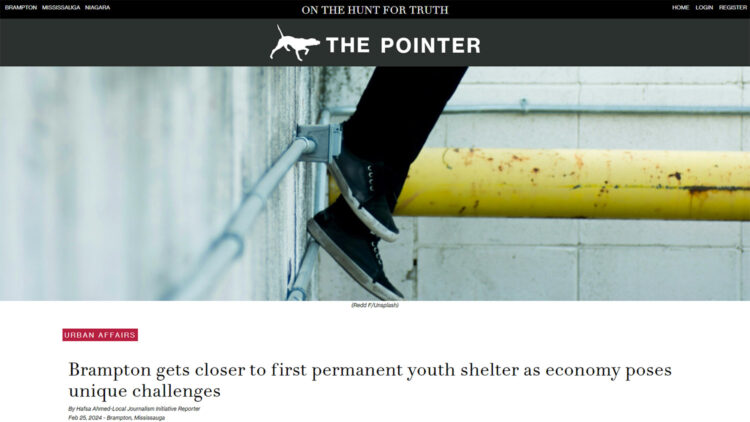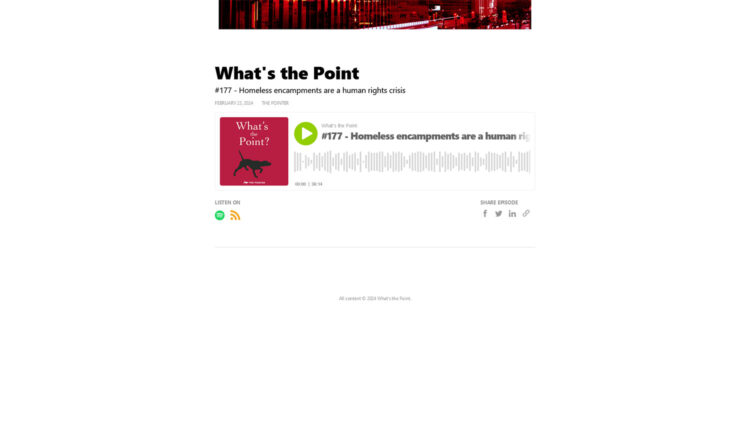Index
- Vision
- Mission
- Values
- Guiding Principles
- PAEH Membership
- Communication Structures / Processes:
- Strategic Leadership Table (SLT)
- Subcommittees of SLT
-
Vision
One Voice: Inspiring Change; Creating Hope; Eliminating Homelessness.
-
Mission
We work collaboratively to advocate for systemic change and investments, through innovative approaches, to ensure the prevention and elimination of homelessness.
-
Values
- We believe all individuals have the right to dignity, choice, and housing – client first – person centered – safe – inclusive.
- We support and promote best/leading practice.
- We value innovation and are open to working in new ways to serve the homeless community better.
- We support equity-based care, so that those with the highest needs receive supports.
- We will ensure “lived experience” perspectives are included in the work we do.
-
Guiding Principles
As members we will:
- Stay connected to our passions for work in this field.
- Prepare for, attend and participate in assigned meetings.
- Keep abreast of PAEH activities.
- Share resources.
- Work to break down silos – understand what’s going on in other organizations – understand where expertise exists and collaborate to maximize it.
- Be as transparent as possible recognizing the tension between individual. organizational needs and PAEH needs i.e. competition and confidentiality are issues to be managed; funding dialogues are required and can be difficult.
- Collaborate to create systems that make sense.
- Ask for help – ask questions – understand limits – offer help.
- Support each other in projects/initiatives that may be occurring in the various organizations.
- Trust one another as we take risks together.
- Address conflict respectfully, aligned with these guiding principles.
- Recognize consensus as the preferred decision-making process to be used by SLT and Subcommittees:
- Quorum is required for decision making (quorum requires 50% of voting members be present).
- If consensus is not possible a vote will occur.
- Ensure and respect confidentiality re matters discussed relating to business, project proposals, and decisions made.
- PAEH’s calendar year will run from January 1 to December 31.
-
PAEH Membership
-
Representative Organizations: voting members
PAEH will aim to have senior representatives (one per organization) that can speak directly to the service of the following sectors, for the purpose of participating on SLT and/or Subcommittees as determined:
- Chronic Homelessness
- Community Corrections
- Community Representation
- Emergency Shelters
- Ethno-cultural
- Health
- Housing: Non-Profit; Family; Transitional
- Indigenous
- LGBTQ2S+
- Lived/Living Experience
- Mental Health and Addictions
- Seniors
- System Planning/Influencers
- Women (Intersectional)
- Veterans
- Youth
-
Co-chairs for PAEH: voting members
Lead PAEH and SLT
- To be selected from two of the above community led organizations.
- Term served will be up to a maximum of three years.
- Chair or a designated member organization will serve as lead agency for the purposes of seeking, receiving, and managing funding for PAEH activities.
-
Funding Partners: non-voting members
Participate as ex-officio on SLT and/or Subcommittees as determined
- Region of Peel
- United Way
- Government representative i.e. Councilors
-
PAEH Analyst: non-voting member
Participate and coordinate activities on SLT and/or Subcommittees as determined
-
Ad Hoc Members: non-voting members
PAEH will aim to have representatives from these broad sectors to participate, as invited when relevant, on SLT or Subcommittees as SME’s /guests as work requires and outcomes indicate:
- Corrections
- Education
- Faith-based organizations
- Global Affairs
- Housing and Landlords
- Police
- Primary Care
- Private Sector
-
Addition of New Participating Agencies
- The PAEH membership may from time to time recommend the addition of other organizations or governmental bodies as members of the Collaborative.
- Upon the agreement of SLT members, additional organizations or governmental bodies will be invited to participate in the Collaborative.
- New Core members will be required to sign the PAEH Collaborative Agreement.
- New agencies or organizations joining the SLT will secure its Board of Director’s (or analogous leadership table) approval of PAEH’s Community Partner Agreement prior to joining
- One representative per organization will sit on the SLT. Should the appointed representative not be available for scheduled meetings, then they can choose a secondary representative to attend on their behalf.
- Any requests for more than one organizational representative to sit at the SLT will be put to a vote by voting members of the SLT.
- The SLT will aim to keep the table at 8-12 voting members.
-
-
Communication Structures / Processes:
-
Strategic Leadership Table (SLT)
Meetings will be held monthly and more frequently as required.
-
Subcommittees
Meetings will be developed and held as required under the direction of PAEH co-chairs.
-
Annual / Semi Annual General Information Meeting
The Alliance will hold general information meetings to ensure the broader community, including tangential agencies, are given a voice and kept abreast of PAEH activities and priorities. This may be in the form or bi-annual or annual newsletter.
-
Agenda and Records
PAEH Analyst will collaborate with PAEH Co-chairs to determine agenda preparation and record keeping for SLT and Subcommittees.
-
-
Strategic Leadership Table (SLT)
-
Purpose of SLT
SLT members steer the vision of PAEH and ensure outcomes related to the four key functions are achieved.
-
Key Functions of SLT:
Advocacy
- Communicate system level trends and opportunities for input.
- Prioritize, frame and target “asks”
- Develop ideas
- Identify directions
- Mentor and drive the Subcommittees as identified.
- Review, evaluate and disseminate outputs from Subcommittees.
Knowledge Exchange
- Systems level thinking.
- Change leadership i.e. system changes, best practices etc.
- Develop and regularly update alliance policies, including membership.
- Setting the tone.
- Implement and ensure follow through.
- Ensuring evidenced based focus.
- Advisory to Subcommittees
- Identify/develop frameworks to demonstrate evidence
Project Work
- Prioritize and identify relevant projects.
- Sponsorship of projects.
- Evaluate data from Subcommittees related to projects
-
Membership of SLT
Voting Members – Up to 12 voting members from Representative organizations.
- Co-chairs of PAEH
- Representative Members
- Ensure balanced representation of sectors and organizations.
Non-Voting Members
- Funding Partners
- Region of Peel
- United Way of Greater Toronto
- Governmental representatives i.e. Councilors
- PAEH Analyst
- Ad hoc members as required/relevant
-
Roles and Responsibilities on SLT
Co-chairs of PAEH
- Lead/chair SLT.
- Plan SLT meeting agendas.
- Facilitate meetings of SLT.
- Ensure work is completed.
- Identify Subcommittees and Team Leads as required to ensure completion of deliverables i.e. subcommittees may be identified for each of the four key functions of SLT.
- Identify SME’s/guests required at SLT dependent on work required.
- Liaise with agency responsible for funding of Analyst position to ensure clarity and accountability within that role.
- Support Analyst.
- Represent PAEH’s voice in the community.
PAEH Analyst
- Manage all communications, record keeping, community engagement, reports, advocacy outputs.
- Lead project work as assigned.
- Facilitate and /or support Subcommittees.
- Ensure communication/links/information sharing between subcommittees and between SLT and subcommittees.
Voting Members
Membership Requirements/Application Considerations:
- Alignment with PAEH Vision, Mission, Values and Principles
- Specific sector expertise, role and knowledge in working in the Housing and Homelessness sector.
- Direct and/or support of the client population i.e. system navigation; prevention; intervention; transition
- Working with individuals in the Region of Peel.
- Decision making authority from their agencies in order to be able to commit their agencies to the Alliance’s work.
- Resources.
- Commitment re time and work required:
- Likely 4-6 hours/month
- Attend SLT meetings/subcommittee meetings as agreed upon.
- Come prepared to meetings, having completed required reading, application reviews and other tasks as agreed upon.
- System level knowledge and expertise to make decisions and recommendations on behalf of the Alliance.
- Influencer
- History of collaboration and partnerships.
- Respect for diversity, differing opinions and varying perspectives
- Addressing a unique or specific need/gap.
- Commitment to fulfilling responsibilities as a standing PAEH member (i.e. attending meetings regularly).
Funding Partners
- Participate as relevant to the dialogues of SLT and Subcommittees.
- Identified “in camera” dialogues may require Funding Partners to step out.
- Influence change/directions identified by the collective voice of PAEH at the government/funding tables.
- Region of Peel provides final approval of projects using PAEH surplus funds as recommended by SLT.
-
-
Subcommittees of SLT
-
Purpose of Subcommittees:
Subcommittees are identified as needed to provide comprehensive input, perspectives and support to the priorities of PAEH as determined by SLT.
-
Key Functions of Subcommittees
Advocacy
- Bring the front line, community, sectorial perspective to SLT.
- Identify and recommend the priorities, “asks” and associated resources to SLT.
- Develop advocacy outputs as decided by SLT.
Knowledge Exchange
- Change management
- Share common practices
- Identify trends
- Mentorship of organizations
Project Work
- Develop, implement, monitor, and evaluate projects
- Ensure “lived experience” perspectives are included when developing projects
- Include best practice and research in project work
- Develop communication strategies related to projects
-
Membership of Subcommittees
SLT determines membership of subcommittees ensuring sectorial representation from leadership, management, and front-line perspectives. Members are expected to bring knowledge and expertise to ensure comprehensive input is included in the assigned work. The goals and deliverables will vary based on the nature of the sub-committee’s work.
-
Roles and Responsibilities on Subcommittees
Sub-committee Lead
- Appointed by Co-Chairs.
- Leads the development of workplans, chairs the meetings, and works closely with the analyst to achieve the subcommittee’s goals.
PAEH Analyst
- With the sub-committee lead, leads and facilitates the sub-committee work.
- Manage all communications, record keeping, community engagement, reports, advocacy outputs.
- Ensure communication/links/information sharing between subcommittees and between SLT and subcommittees.
Members
- Participate and act in accordance with general SLT member roles and responsibilities.
- Work with other members of the sub-committee to achieve the goals and deliverables based on the workplan.
Funding Partners
- Participate as relevant.
-






























